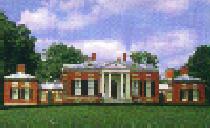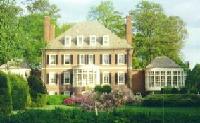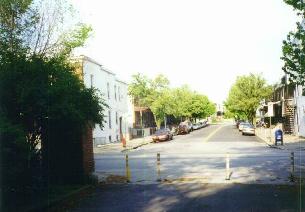
|
Essays, articles, and other writings |
|
|
|
Featured essay # 1: THE PROFESSOR As is my habit, I was nested in the courtyard with my after dinner coffee when a young neighbor wandered over. She remarked that she was earning a Master of Liberal Arts degree at Johns Hopkins University This is a fun type of degree where you take ten courses in History of Ideas, across a broad range of subjects. I told her that I had taken the same degree a number of years before. (In point of fact, the year was 1969!) My neighbor asked which professors I had. I stuttered and stammered. So many of the Evening School professors were emeritis that I doubted whether any were now living."Well, there was Dr. William McClain," I said. "He was the most brilliant of all the teachers I have ever encountered. And I know he is dead." No one could wrest more feeling out of German literature than Dr. McClain. One's heart churned with longing as he re-created the internal tug of Thomas Mann's artist heroes, torn between the discipline of their craft and the inexplicable pull of the darker side. Or Hesse's Harry Hailer, lulled by the domestic smell of his polished furniture lodgings but lured to the nocturnal pleasure domes in search of his animal nature. Or--the biggest paradox of all-- the tortured chords of Tristan and Isolde.Liebestod. Love and death Did McClain himself feel such a tension, I wondered? The shy, unassuming man's eyes glittered as he related such tales, his countenance was vibrant. For the next quarter century I was a McClain watcher. I would spy him walking along St. Paul Street from his home in the Marylander to the shopping area three blocks south. I would see him boarding the bus for the Rotunda. So far as I knew, he had no car. When we passed on the street, he remembered my name. If I were with a companion, I would murmur, "There goes the most brilliant professor I have ever had." Eventually Dr. McClain moved to a house in Oakenshaw, the small community bound by University Parkway, Calvert St., Southway and Barclay St. My last glimpse of him was his waiting at a cold and crowded bus stop at 33rd and Greenmount near Christmas time perhaps three years ago. A couple of months after that, Dr. McClain's picture appeared on the front page of the Sunpapers. This is almost never good news. This marvelous mind--so mortal! The professor had arrived home one night from the ballet. He was mortally mugged as he stood on the porch of his Oakenshaw home. (Beladoro) |
| Featured essay # 2: |
 |
|
| Crab Feast | |
| Maryland is well known for the Chesapeake Bay
state and it's blue crabs. Eating Maryland crabs and catching them is a great
experience. I, Robin use to catch crabs when, younger in Annapolis at my Aunt
Betty's and Uncle Norman's house. They had a pier and I would put out about half
a dozen lines with chicken backs and necks. You could tell if a crab was on the
line, when it pulls out and gets taught as before it would just dangle. I would
also catch doublers on the pilings. Doublers were a male and female crabs
mating. The female crabs have aprons or bibs, as the males don't. To keep male
crabs, they have to be five inches or larger. The best time to crab is when it's
raining or overcast. This weather brings them to the surface. I would have a
large wooden basket, that I would place crabs in as I caught them. I would dip
them in the water from time to time to keep them alive. I remember this so well,
because my Aunt Betty would be nice enough to cook them for me. During the
cooking time my Uncle Norman would be out of the house, because he not only
didn't like the smell of crabs, but is allergic to them. If you have not tried
this Maryland delicacy, you really don't know what your missing. It's worth the
visit. The season for crabs is usually the end of June through the end of September. This article or essay is By: Robin |
| Featured essay # 3: |
 |
|
| Charles Carroll of Carrollton |
|
|
Charles Carroll(1737-1832) at the time of his death was the oldest surviving
member of the signers of the Declaration of Independence. He played an important
role in the successful outcome of the Revolutionary War. Charles Carroll was born in Annapolis to a substantial family. His grandfather came here from England in 1688 as Lord Baltimore’s Attorney-General for the Province of Maryland. He owned about 60,000 acres of land and operated a banking business lending money at interest. Charles Carroll’s father was educated in France as was Charles Carroll. He had a Catholic education and as a Catholic was furious at the ban on the Catholic religion in Maryland. He later made sure that the new state of Md.granted civil and religious freedom to Catholics. Charles Carroll’s father added to the wealth that he inherited from his father until he had one of the largest fortunes in the colonies. Charles Carroll’s father was known as Charles Carroll of Annapolis and it was to distinguish himself from his father that he became Charles Carroll of Carrollton taking the name from the name of his plantation in Frederick County. Charles Carroll was active in the Continental Congress where he served from 1776-1778. He became the wealthiest citizen in the U.S. and gave liberally to help feed, clothe, and arm the Americans during the Revolution. He helped defeat a plan to oust George Washington as Commander. Had this plan succeeded, the Revolutionary War probably would not have been won. Charles Carroll was a Federalist and represented Md. as senator in the first federal congress from 1789-1792. He ended his political career to manage his estate of 70-80 thousand acres. In common with the Federalist Party he opposed theWar of 1812. He believed that slavery was wrong and against the principles of the new government. He was in favor of gradual freedom because it would be less damaging to the nations agricultural system and because he believed freed saves had to be trained for jobs and given land. He spent his last days in the home of his daughter on Lombard and Front. Sts. in Baltimore which is open to the public. He gave his son money to build a home which is located on the site of John Hopkins University, although there was nothing there at the time. It was not even part of Baltimore. His son spared no expense and the house is an example of federal architecture. The house is maintained and is open to the public. There are tours of the house for a fee of $5.00. -Jane |
| Featured essay # 4 |
|
|
| Featured essay # 5 |
 |
 |
|
The Real Baltimore? |
The Real Baltimore? |
|
Tale of Two Baltimores Greenmount Ave., the longest street in
Baltimore, runs north and south. Further north in Baltimore the name changes to
York Rd. which goes through Northern Baltimore County and into Pennsylvania
finally ending at York Hospital in York, Pa. |
| Featured essay # 6 |
|
Bad Orb
|
|
On
our way to Bad Orb this summer before leaving for Frankfurt and home, we hit the
start of one of Europe's worst heat waves.
Neither
our car nor any rooms were air conditioned, so upon arriving in Bad Orb we chose
one of the really nice looking hotels across from the main park which was full
of big, green, leafy trees and shade. Ernie wanted me to have good memories of
Bad Orb, so he rented an apartment for us which consisted of a bedroom, bath,
and sitting room with balcony and chaise lounges. He mentioned to the desk clerk
that we were visiting Bad Orb because my family had come from there many years
ago.The next day I mentioned my family name, Prasch, to a hotel clerk, and next
thing we knew the manager of the hotel was telling us what an "Ehrename"
it was, a very honorable and prestigious name, etc. She told us that she was
attempting to reach the mayor of the town in order that we could be officially
greeted. "Ehrename" means very old, ancient, or respected in German,
and is not used lightly. It denotes people of honor who were probably among the
nobility and who were persons of means. |
| Featured essay # 7 |
 |
New Year's Traditions
contributed by Robin |
Do you have a New Year's tradition? There are many; I thought we'd share a few of them with you this week. The first person to enter your home must be of male gender. This tradition is still followed by some, even if it means the husband of the family will leave via the back door and enter through the front door to ensure no female enters first. Along the same lines as the last tradition is that the first visitor of the New Year would bring good luck. The luck was especially phenomenal if it was a tall, dark haired man. Various foods eaten on New Year's Day are believed to bring good luck. Some cultures believe that anything in the shape of a circle is lucky. For this reason, the Dutch believe that eating donuts the first day of the year will bring good fortune. Cabbage is a good-luck vegetable, and most know about the southern traditions of eating black-eyed peas and maybe hog jowls to accompany them. Some families celebrate with a special cake that is baked. When the cake is cut, the person who finds a coin in his or her slice is promised luck for the year. Other families hold money tightly clinched in their fist for the first 12 minutes of the New Year, each minute symbolizing prosperity for a month of the new year. Some believe you do not wash clothes on New Year's Day! If you do, it could mean someone in your family will die that year. Start the New Year with clean thoughts and clean clothes; all to be washed before New Year's Day arrives. Eating pork as the first meat of the New Year is yet another tradition to bring good fortune. A well-known tradition is the New Year's resolution. Millions of Americans contemplate what they want to modify during the next twelve months, and then commit to that change. Whether or not you have a tradition for the New Year, we hope that you have read these in good spirit, and respect the belief of others. -Robin |
| ____________________________________________________________________________________ |
| Select and click to link to each section: |
| Home | Occult| Paranormal | Dorian's Occult Site | Poetry, Haiku | Mysteries | Halloween | |
| ___________________________________________________________________________________ |